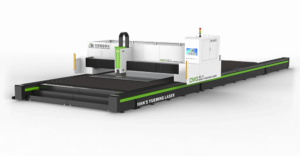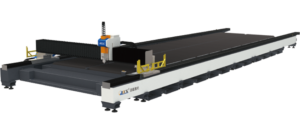 Laser cutting machines have become an increasingly popular tool in the fields of architecture and interior design, thanks to their precision and versatility. These machines use a highly focused beam of light to cut through a variety of materials, including metals, woods, and plastics.
Laser cutting machines have become an increasingly popular tool in the fields of architecture and interior design, thanks to their precision and versatility. These machines use a highly focused beam of light to cut through a variety of materials, including metals, woods, and plastics.
One of the key benefits of using laser cutting machines in architecture and interior design is their ability to produce intricate and detailed designs. The laser beam can be focused to a very small point, allowing for precise cuts in even the most delicate of materials. This precision cutting makes it possible to create complex geometric patterns and intricate decorative elements that would be difficult or impossible to achieve with traditional cutting tools.
In addition to their cutting capabilities, laser cutting machines can also be used for etching and engraving. This opens up a world of creative possibilities for architects and interior designers, as they can use the laser to create intricate patterns and textures on a variety of materials.
Laser cutting machines also offer a high level of versatility, as they can be programmed to cut a wide range of shapes and sizes. This makes it possible to create everything from simple decorative elements to complex three-dimensional sculptures.
In addition to their design capabilities, laser cutting machines can also be used for functional purposes in architecture and interior design. For example, they can be used to create custom lighting fixtures, wall panels, and other architectural features.
Despite their many benefits, laser cutting machines also have some limitations. For example, they can be expensive to purchase and maintain, which can make them less accessible to smaller design firms or independent designers. Additionally, some materials may not be suitable for laser cutting, as they can produce toxic fumes or may be too difficult to cut with a laser.
Despite these limitations, laser cutting machines offer a wealth of design potential in architecture and interior design. They provide designers with a powerful tool for creating intricate and precise designs, and can help to bring their creative visions to life in new and exciting ways.